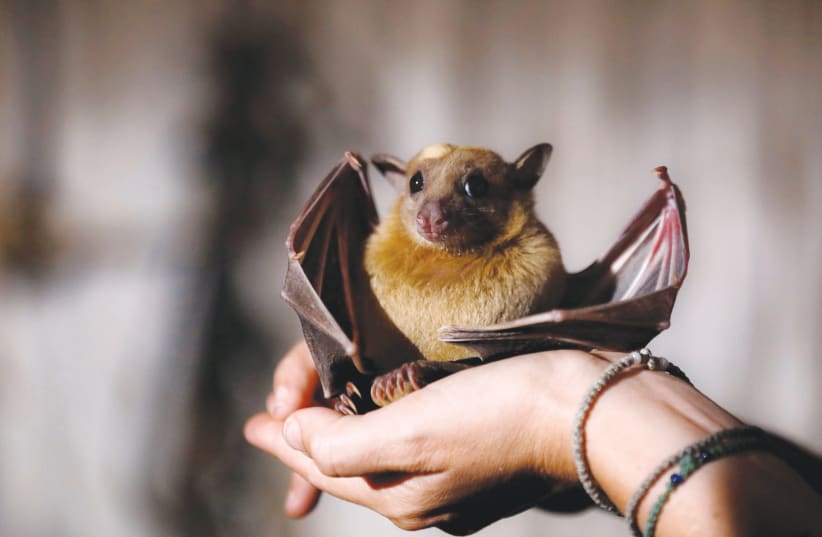The poxvirus, called Israel Rousettus aegyptiacus poxvirus (IsrRAPXV), was found on a bat residing in the Zoological Gardens in Tel Aviv. The samples were originally taken from the bat in 2014, however, research has been ongoing for several years; the discovery that the virus only exists in Israel was only made recently in 2018, and the study, 'A novel poxvirus isolated from an Egyptian fruit bat in Israel,' was published only this year in Veterinary Medicine and Science.
IsrRAPXV is unique in that not only has it not been detected anywhere else in the world, but it's also the first time that a poxvirus has been identified in Israel.
The novel poxvirus was discovered after a bat at the Zoological Gardens in Tel Aviv presented with symptoms deemed clinically normal for a poxvirus; consisting of multiple vesicular and nodular skin lesions on the wing membranes. The bat was moved from a captive fruit bat colony, after which scientists took multiple biopsies from the bat before they released it to an open colony with unrestricted access to the external environment.
A multitude of tests were subsequently performed using samples taken from the biopsies, and later, in order to test that what was found was indeed a poxvirus, DNA was extracted. Researchers found that the test results implied that the fruit bat was infected by an unreported and presumably new poxvirus.
Cell culture isolation, histopathology, electron microscopy and molecular analysis revealed the presence of a novel bat poxvirus. More tests were conducted in order to elaborate on previous findings, and in 2018 the Israeli poxvirus was provisionally designated as IsrRAPXV.
The zoonotic potential, otherwise described as the potential for the ability of the virus to jump from bats to humans, is unknown. Bats are reservoirs of numerous viral agents that are transmissible to humans and animals, an example being the Hendra virus (HeV), which can pass from fruit bats to flying foxes, and from horses to humans, according to the government website for New South Wales.
Hendra virus is so named as it was first identified in the Brisbane suburb of Hendra, Australia, 1994. To date total of seven humans have contracted Hendra virus from infected horses, according to the World Health Organization.
Notably similar pox-like lesions that were found on the Egyptian fruit bat were described in an Australian little red flying fox (Pteropus scapulatus) that was trapped in the Kimberley region of North Western Australia. However, DNA was extracted from a lesion sample and the presence of something called PTPV was confirmed.
Other zoonotic viruses that have emerged in humans from bats including the Nipa Virus, which can result in acute respiratory illness and fatal encephalitis, yet only a few known cases have been identified in Asia. In addition, are filoviruses, which can cause severe hemorrhagic fever in humans and nonhuman primates, according to the US Centers for Disease Control.
So far, three genera of this virus family have been identified: Cuevavirus, Marburgvirus and Ebolavirus, the latter two having recently been identified in fruit bats in Africa, the CDC states.
Egyptian fruit bats roost in large colonies that provide many opportunities for disease transmission including deposition of the virus on body surfaces followed by infection of abrasions or auto‐inoculation during grooming, according to the IsrRAPXV study, written by Dan David Irit Davidson Asaf Berkowitz Sharon Karniely Nir Edery Velizar Bumbarov Orly Laskar Ron Elazari‐Volcani.
It adds that although "no pox infections have been reported in humans exposed to this bat, it would be prudent for professionals working with bats to wear protective clothes and gloves when handling them."
